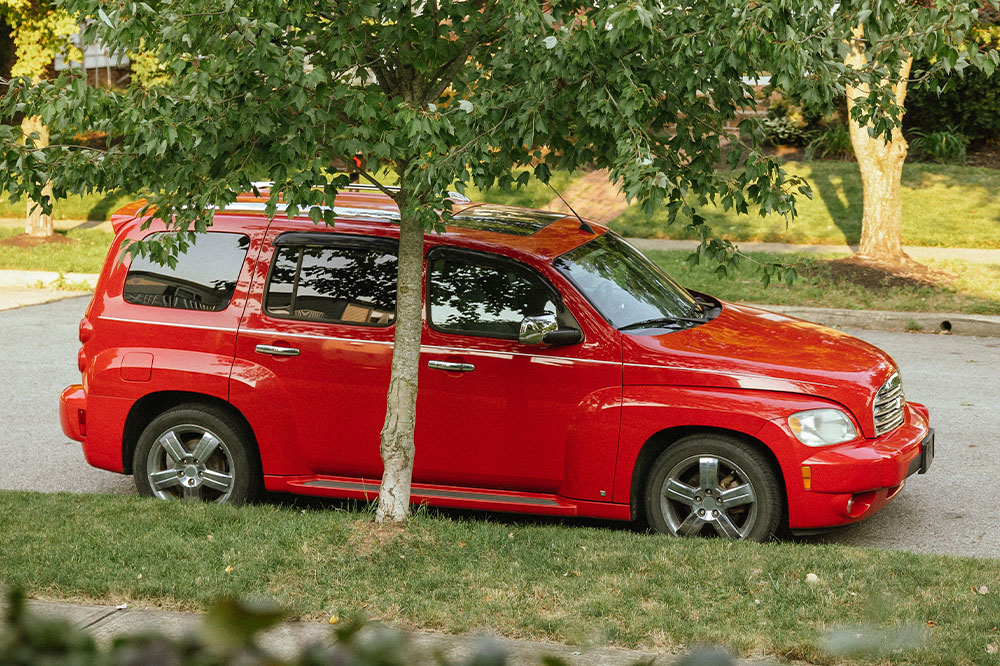Everything to Know About the Chevrolet HHR
The Chevrolet HHR is one of the best classic cars you can find today. It was conceptualized by the automobile designer Bryan Nesbitt and is considered among the finest Chevrolet cars. Its retro look makes the exterior seem distinctive, and yet, you can find modern amenities in the Chevy HHR—an initialism for Heritage High Roof. So if you are looking for a spacious wagon-style car, here is everything you need to know about the HHR:

History
In the early 21st century, the Chevrolet HHR was considered a top-notch utility vehicle, with its four-cylinder, swift features, and simple yet sophisticated interior. Interestingly, the HHR’s panel-van variant rear doors had no exterior handles. This was part of Chevy’s experimentation and improvisation, although it was considered impractical by critics at the time. Later, to keep up with modern requirements and the competition, the Chevy HHR SS was introduced. This was a sporty trim that prioritized high performance.
Design
The Chevrolet HHR is a comfortable and quiet ride. Additionally, the car’s large storage space, appealing cabin and interiors, great visibility, and flexible sound system are a few elements that enhance the overall charm. Further, the dashboard comes with detailed gauges, solid construction, and easy-to-use physical controls. While you could find an abundance of hard plastics inside the HHR, the interior design has been appreciated for its spaciousness. The high roof makes up for the limited room in the rear seats of this compact wagon. Chevy wanted to pique the interest of car enthusiasts, so it introduced upgrades to the HHR in its SS trim. However, it was launched when the world was going through a recession, making it a challenging experience for the brand.
Performance
The base model of the HHR saw an increase in power and speed with the introduction of the SS trim and the panel van variant. Interestingly, during the height of the financial crisis, both the Chevrolet HHR models were equipped with a 2.0-liter turbocharged four-cylinder engine. This engine generated 260 horsepower, which was unusually high at the time of the car’s introduction. What’s more? It took only 6.3 seconds for the wagon to accelerate from zero to sixty miles per hour. In comparison to the first-generation HHR engine, which was only capable of producing around 175 horsepower, it is easy to understand why the SS trim was an improved remodel. Today, you can choose between the standard five-speed manual transmission and the optional four-speed automatic. The engine options—2.2-liter and 2.4-liter inline-4 engines—on the LS and LT trims offer a combined fuel economy of 25 mpg.
Safety
Chevrolet has ensured drivers get adequate safety and assistance through the HHR’s anti-lock brakes, traction control, and stability control. Additionally, side curtain airbags and OnStar telematics enhance overall safety. The compact wagon received the maximum possible score of five stars in government testing for its ability to prevent damage in the event of a frontal or side impact crash. The wagon received a rating of “Good” from the Insurance Institute for Highway Safety for frontal-offset collisions and an “Acceptable” rating for side impacts.
Costs
The original starting price of the HHR is $19,720, however, you can get it at a much lower price if you opt for a pre-owned or reconditioned model. Additionally, the typical cost of maintaining the HHR could be up to $542 per year. Compared to the upkeep cost of $651/year for the average vehicle, the wagon is significantly less expensive to maintain.
The Chevrolet HHR is available as a four-door, five-passenger hatchback wagon or a two-seat panel variant. So check out the compact SUV-style wagon for yourself by visiting your nearest pre-owned car dealership.